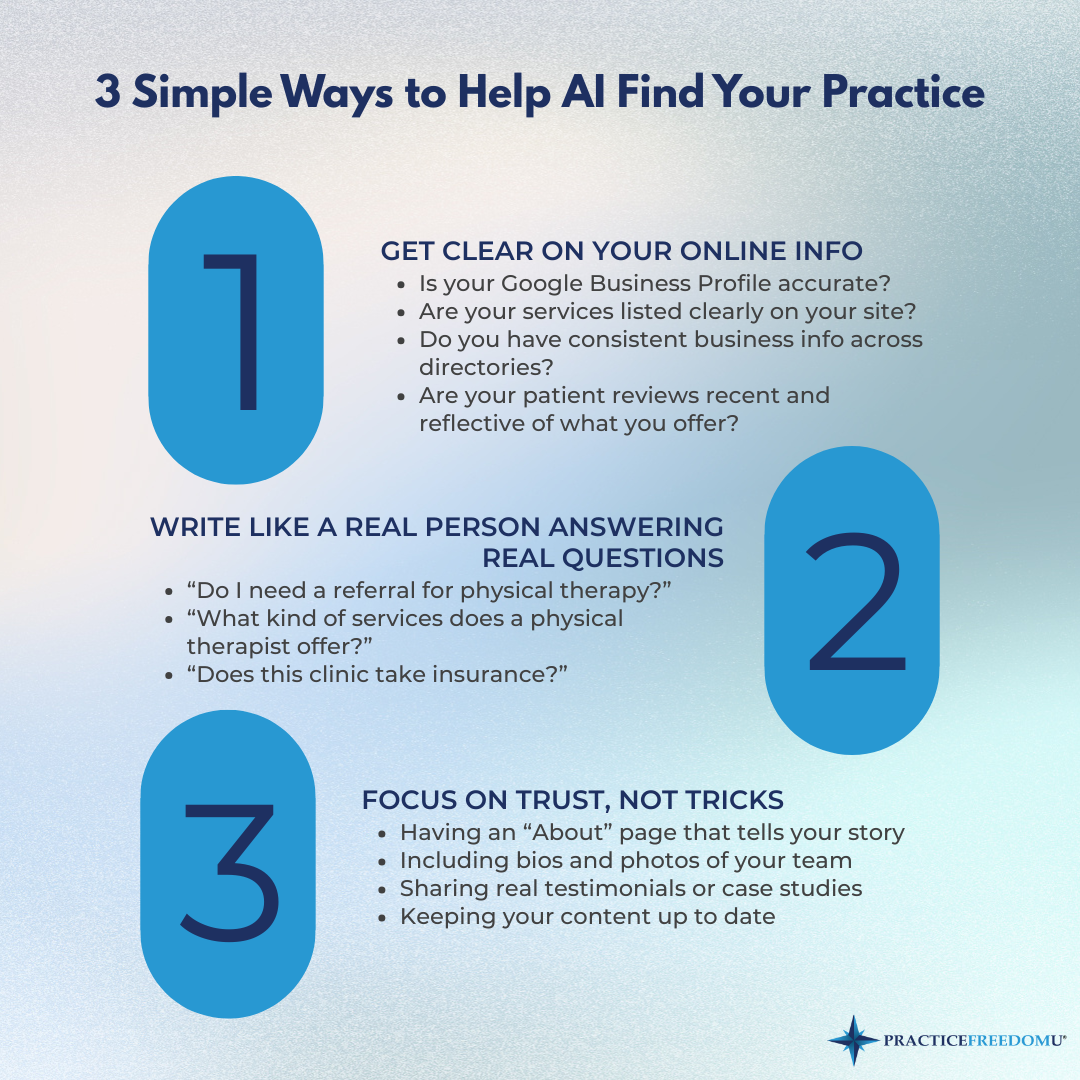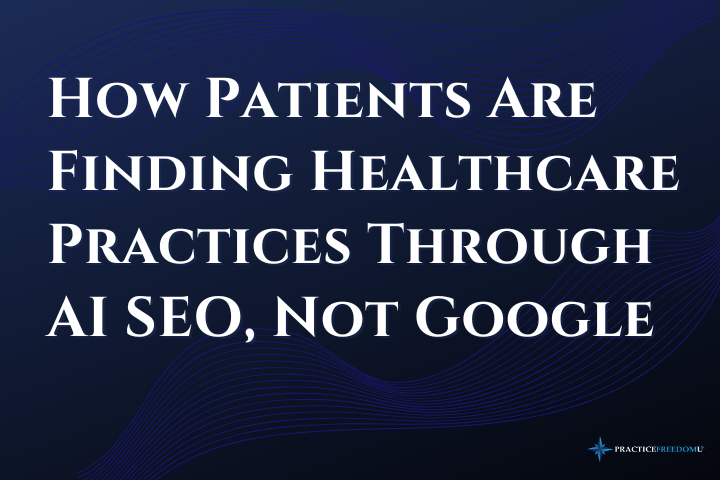Introduction
If your practice still depends on Google for visibility, it might be time to take a closer look at how people are actually searching today.
More patients are using AI tools like ChatGPT, Siri, and voice assistants to find answers, get recommendations, and even decide where to go for care. This shift is changing how private practices show up online and highlights the growing importance of AI SEO for healthcare practices. The answer is often based on data and content that’s outside your control, unless you know how to show up where they’re looking.
This article won’t teach you how to write code or game an algorithm. Instead, it will help you understand what’s happening, why it matters, and what simple steps you can take to make sure your practice doesn’t get left behind.
What’s Changing and Why It Matters
Ten years ago, your online presence was all about ranking on Google.
Now, it’s about being known by the tools patients are actually using. AI assistants, smart speakers, and chatbots are being trained to give medical answers, recommend providers, and guide people to care.
That shift matters for one reason: if you’re not visible in these platforms, your practice becomes harder to find.
And here’s the bigger problem. Most practice owners don’t even know this shift is happening. They’ve got outdated websites, inconsistent listings, or old blog posts that haven’t been touched in years. These things used to be okay. Now they can make the difference between showing up or getting skipped over.
This Isn’t About Becoming a Tech Expert
You don’t need to learn SEO. You don’t need to master AI. That’s not your job.
Your job is to lead a business that delivers great care. My job is to help you lead that business in a way that supports your goals, not drains you.
This is about awareness. It’s about knowing that the game has changed, so you can ask better questions, make better decisions, and work with the right people when it’s time to upgrade.
You don’t have to become an expert in search. You just have to stop ignoring it.
Three Simple Things You Can Do Right Now

1. Get Clear on Your Online Info
When AI tools try to pull information about your clinic, they look for facts. Your location. Your hours. Your specialties. Your reviews.
Start by checking the basics:
- Is your Google Business Profile accurate?
- Are your services listed clearly on your site?
- Do you have consistent business info across directories?
- Are your patient reviews recent and reflective of what you offer?
This is boring, simple stuff. A Wall Street Journal report highlights how generative AI systems are increasingly relying on accurate business listings, real-time reviews, and structured content to identify and recommend local service providers, including healthcare practices.
2. Write Like a Real Person Answering Real Questions
The way we talk to AI is different from how we search. Instead of keywords like “physical therapist Maryland,” people ask full questions:
- “Do I need a referral for physical therapy?”
- “What kind of services does a physical therapist offer?”
- “Does this clinic take insurance?”
If your website doesn’t include answers to real questions like these, AI tools won’t use you as a source. An article from MIT Technology Review notes that AI-powered search is reshaping how information is surfaced online, rewarding content that aligns with natural language patterns and real-world intent. This makes it critical for local businesses to structure their content in a way that mirrors how people actually speak and search. Here are a few simple examples you can add to your site:
- A short section titled “Common Questions We Hear” with 3–5 bullet points
- A paragraph that explains how someone can book an appointment, step-by-step
- A list of accepted insurance providers and frequently asked policy questions
- A breakdown of first-visit expectations: what to bring, how long it takes, what to wear
The goal isn’t perfection. It’s making the information people ask you in real life easy to find online.
You already know what they’re asking. Just put it in writing.
3. Focus on Trust, Not Tricks
Whether it’s Google or ChatGPT, these platforms are looking for content that feels trustworthy and real. In a Business Insider piece, marketers point to a major shift in how AI tools surface business recommendations. Instead of favoring keyword-heavy content, platforms like ChatGPT now prioritize clarity, trustworthiness, and content that reflects a real human voice. Verified listings, consistent branding, and authentic messaging are becoming central to being recognized.
That means:
- Having an “About” page that tells your story
- Including bios and photos of your team
- Sharing real testimonials or case studies
- Keeping your content up to date
You’re not building trust with robots. You’re building it with people who need to feel safe choosing you.
What to Do Next
You don’t need to overhaul your entire online presence to start seeing results. What matters most is momentum.
Pick one area. Maybe it’s updating your Google Business Profile. Maybe it’s adding an FAQ section to your website. Or maybe it’s simply asking a few happy patients to leave a review. Small steps, done intentionally, will move you forward.
The goal isn’t to master AI or become an SEO strategist. It’s to make it easier for patients to find you and choose you. That begins with action—any action—that helps you show up more clearly online.
You don’t need to chase every trend. But you do need to stay visible.
AI isn’t replacing relationships. It’s not replacing trust. But it is becoming the way people find the services they rely on. If your practice isn’t showing up where they’re searching, it’s time to take a few simple steps.
You’ve built something valuable. Let’s make sure the right people can find it.
Start small. Start now.
————————————————————-
Are you ready for a coach? Join the hundreds of physical therapy owners who are building the practice of their dreams with the support, guidance and direction of a Practice Freedom U Coach. Take the first step towards creating a business that sets you free by scheduling a Discovery Call


